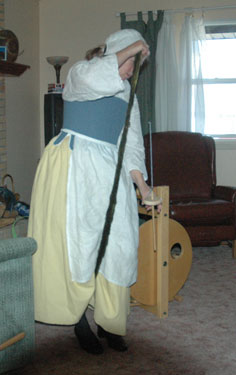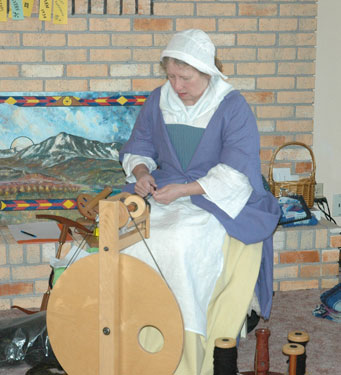I was asked to give a short lecture to a very small, five-person class of Vision students about clothing from between 1625 and 1750.
I dressed in my mantua and full Golden Age of Piracy outfit made from Reconstructing History patterns.



I’m not very good at spinning on a hand spindle. My spinning wheel is also completely inaccurate, but it’s the only one I have, so I used it.
In addition to demonstrating spinning, I talked about the difference between woolen and worsted clothing. I also touched briefly on the way textile manufacturing was organized at that time in history. I gave out some of my top clothing and costume myths, and we talked about them. My top contenders for common misconceptions are:
- Historical movies are a good way to see what the clothing was like.
- Stays, bodices, and corsets are tight and uncomfortable, and you cannot breathe or work in them.
- Lower classes only wore hand-me-downs from the upper classes.
- Lower-class clothing is cut the same as upper-class clothing, just from poorer fabrics and less embellished.
- Fabrics are all coarse and rough.
- Only browns and drab colors are available.
- Scottish people wore tartans and Irish people wore green.
- The clothing was unshapely and baggy.
- Poor people didn’t hem or mend their clothing.
- Embroidery and embellishments were only for the wealthy.
- Women could show their shoulders.
- Women could not show their feet or legs.
- No one had underwear.
- No one took a bath or washed their clothing.
I had a great time. The kids asked good questions, and I think the teacher learned just as much as the kids!
